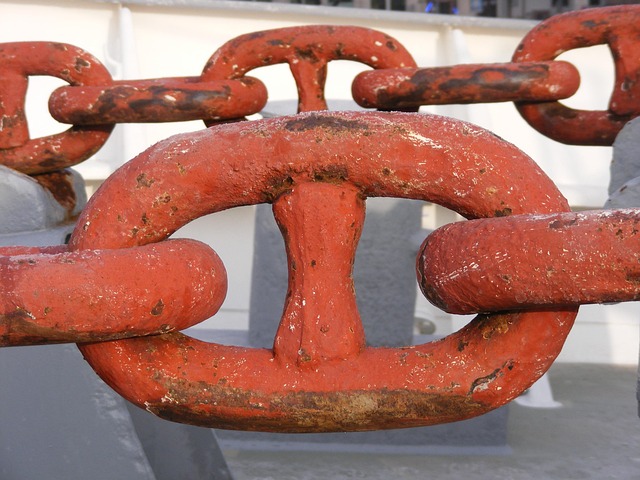Internal linking is a powerful SEO strategy that improves user experience by enhancing website structure and navigation. It involves strategically placing links within articles to related pages, using descriptive anchor text, and organizing links logically based on information hierarchy. Key pages, identified through tools, serve as central content pieces, guiding users and search engines alike. Effective internal linking boosts SEO by increasing relevant traffic, improving user engagement, and optimizing site architecture. Regular reviews, data analytics, case studies, and following best practices ensure the strategy remains dynamic and effective in driving organic traffic and establishing authority.
Internal linking is a powerful SEO strategy that connects relevant pages within your website, enhancing user experience and search engine visibility. This article offers valuable insights into leveraging internal links for optimal performance. We’ll explore key concepts like understanding the role of internal linking in SEO, identifying target pages, crafting contextually relevant anchor text, and implementing best practices. Additionally, we present case studies showcasing successful internal link strategies and provide metrics to measure their impact, offering practical internal link suggestions along the way.
- Understanding Internal Linking and Its Role in SEO
- Identifying Key Pages for Strategic Internal Links
- Crafting Relevant and Contextual Anchor Text
- Implementing Internal Links: Best Practices and Techniques
- Measuring the Impact of Effective Internal Linking
- Case Studies: Successful Internal Link Strategies in Action
Understanding Internal Linking and Its Role in SEO

Internal linking is a powerful strategy that plays a pivotal role in search engine optimization (SEO). It involves creating links within your website’s content, guiding users and search engines to relevant pages. By implementing effective internal link suggestions, you can enhance user experience, improve website navigation, and significantly boost SEO performance.
These internal link suggestions tips are not just about optimizing for keywords; they focus on structuring your site in a way that encourages exploration and discovery. An internal link suggestions tutorial might include strategies like linking to related content within an article, using anchor text that accurately represents the linked page’s content, and ensuring a logical flow of links that mirrors the hierarchy of information on your site. This approach not only helps search engines understand your website’s structure but also keeps visitors engaged by providing them with valuable, contextually relevant resources.
Identifying Key Pages for Strategic Internal Links

When crafting a comprehensive internal linking strategy, identifying key pages is a pivotal step. These are the cornerstone content pieces that not only offer valuable information to users but also serve as vital links between other relevant pages on your website. To pinpoint these key pages, consider pages with high traffic, strong search engine rankings, or those that cover broad topics within your niche. Utilizing internal link suggestions tools can provide insights into these pages, highlighting their relevance and potential for effective linking.
An internal link suggestions tutorial would guide you in analyzing page performance, understanding user behavior, and identifying opportunities to enhance navigation. By integrating these strategic links, you create a seamless digital experience, encouraging users to explore more content and improving your site’s overall authority. Remember, an effective internal linking strategy is not just about connecting pages; it’s about guiding users through your website’s tapestry of information, ensuring they find what they need effortlessly.
Crafting Relevant and Contextual Anchor Text

Creating effective anchor text for internal links is an art that contributes to a seamless user experience and improved search engine visibility. When crafting internal link suggestions, it’s vital to keep the text relevant and contextual to the linked page. Anchor text should provide a clear indication of what users can expect to find when they click on it, aligning with the content and purpose of the target webpage. For instance, if you have an article about “SEO Best Practices,” using anchor text like “unleash the power of SEO” or “deep dive into organic rankings” offers a precise hint about the topic, enticing users to explore further.
Optimal internal link suggestions tips include keeping the language concise and descriptive. Avoid generic phrases like “click here” or “more info.” Instead, focus on using keywords that naturally fit within the context of your content. For example, in a blog post discussing “content optimization techniques,” you might use anchor text such as “explore advanced content strategies” or “uncover SEO-friendly optimization tips.” This approach not only enhances user engagement but also aids search engines in understanding the thematic connections between pages, contributing to effective internal link suggestions optimization.
Implementing Internal Links: Best Practices and Techniques

Implementing effective internal links is a crucial aspect of optimizing your website’s structure and enhancing user experience. When done right, internal linking can significantly improve your site’s SEO (internal link suggestions optimization) performance by guiding users through relevant content and helping search engines understand your site’s hierarchy. Start by identifying key pages that should be interconnected based on their topics or user journeys. These internal links should provide value by offering additional information or related resources, ensuring a seamless navigation experience.
When crafting internal link suggestions, keep the following best practices in mind: use descriptive anchor text, make links contextually relevant, and avoid keyword stuffing. Descriptive anchor text not only improves click-through rates but also communicates the destination page’s content to both users and search engines (internal link suggestions tips). Additionally, ensure that your internal linking strategy aligns with your overall SEO goals. Regularly review and update these links to maintain their relevance and effectiveness, allowing you to stay ahead in the ever-evolving digital landscape.
Measuring the Impact of Effective Internal Linking

Measuring the impact of effective internal linking is a crucial step in understanding its value and optimizing your website’s performance. By implementing strategic internal links, you can guide users to relevant content, improve user experience, and enhance search engine optimization (SEO). One way to gauge success is by tracking user behavior through analytics tools. These platforms provide insights into click-through rates, time spent on pages, and bounce rates before and after implementing internal link suggestions.
An internal link suggestions tutorial or tips can help you identify high-quality content that benefits from interlinking. For instance, a comprehensive guide or resource page linked to relevant articles increases engagement and establishes your website as an authority in the topic. These SEO best practices not only drive organic traffic but also improve site architecture, making it easier for search engines to crawl and index your pages.
Case Studies: Successful Internal Link Strategies in Action

Case studies provide a powerful tool to showcase real-world examples of successful internal linking strategies. By examining the internal link structures of high-performing websites, content creators can gain valuable insights and learn from industry leaders. These in-depth analyses offer tangible evidence of what works effectively, serving as a guide for others to implement similar tactics. For instance, a popular e-commerce site was found to utilise strategic anchor text variations, ensuring each internal link contributes to the overall SEO effort while enhancing user experience.
An internal link suggestions tutorial can outline specific strategies observed in these case studies. Tips include creating comprehensive pillar content that ties together related pages and using internal links to support hierarchical information architecture. A well-planned strategy involves identifying target keywords for each page and strategically placing internal links with relevant anchor text, which not only improves SEO but also guides users through the site’s content ecosystem.
